#history of coins
Explore tagged Tumblr posts
Text
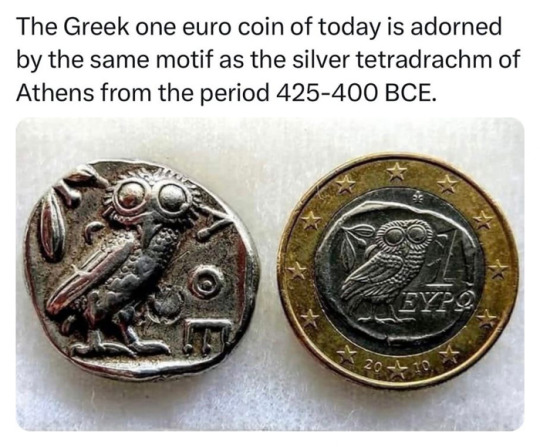
7K notes
·
View notes
Text

Rat coin purse designed by Paul Frey for the renowned Lacloche Freres jewelers and was popular in the early 1900s. It is part of the French Art Deco movement and is made of brass and a small ruby.
6K notes
·
View notes
Video
youtube
The History of Coins: When & Why Did People Start Using Coins?
0 notes
Text
bro. bro you are romantisizing the secret history. bro you are enamored with the greek class just like richard. bro you are ignoring the bad things and creating aesthetics based on a book telling a murder of a young man. brother.
#anyways#i am both sides of the coin#the secret history#tsh#donna tartt#richard papen#henry winter#bunny corcoran#francis abernathy#camilla macaulay#charles macaulay#the secret history donna tartt#dona tartt the secret history#dark academia#dark acadamia aesthetic#aesthetic
3K notes
·
View notes
Text
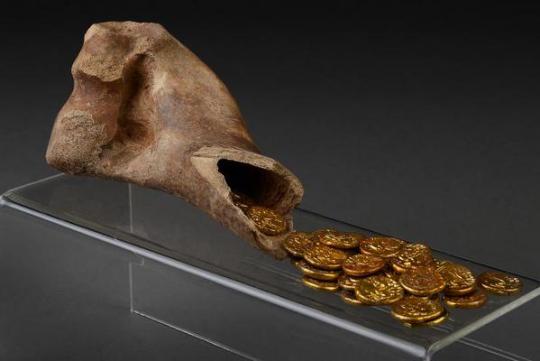
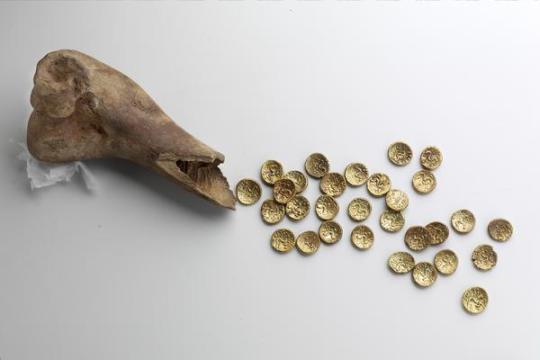
A hoard of Celtic gold coins hidden in a cow bone, discovered near Sedgewick, England, 1st century AD
from The Norfolk Museums Collections
3K notes
·
View notes
Text


~ Head of Pan to the left (Coin).
Date: ca. 350 B.C
Mint: Pantikapaion
Medium: Gold
#ancient#ancient art#history#museum#archeology#ancient history#archaeology#roman#numismatics#coin#greif#pan#corn#pantaka#Pantika#Pantikapaion#gold
1K notes
·
View notes
Text
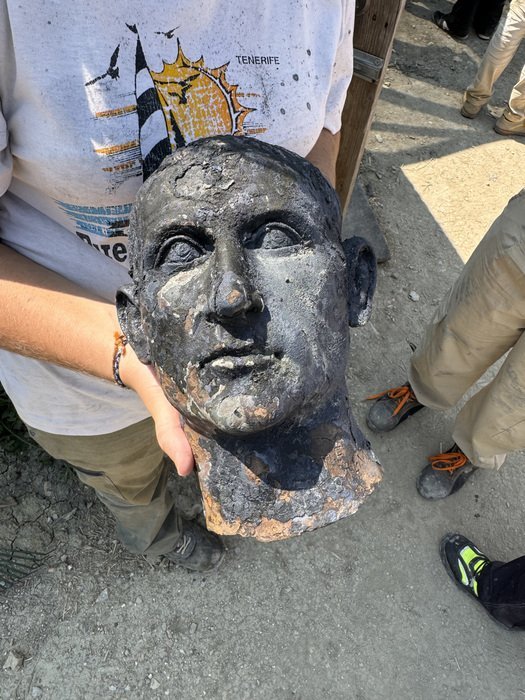

Bronze Statues and Coins Found at Ancient Sacred Bath in Tuscany
Archaeological excavations at the Bagno Grande sanctuary in San Casciano dei Bagni, Tuscany, Italy, have uncovered a wealth of artifacts that highlight the Etruscan-Roman heritage of this ancient thermal site.
Dating back to the 3rd century BCE, the sanctuary was originally constructed by the Etruscans and later developed by the Romans into the renowned spa complex, Balnea Clusinae. Revered for its therapeutic hot springs, the site attracted visitors from across the Roman Empire, including Caesar Augustus.
The recent excavation, spanning June to October 2024, focused on the sacred temenos, a walled enclosure surrounding the sanctuary, and revealed the remnants of a central temple built around a thermal water basin. Within this sacred space, archaeologists unearthed an array of votive offerings and artifacts remarkably preserved by thermal waters and clay.
Among the most notable finds are four bronze statues, votive limbs, and heads, inscribed with dedications. A striking bronze torso, bisected from neck to genitals, was dedicated by a man named Gaius Roscius to the “Hot Spring.” Researchers suggest this statue symbolizes the healing of specific ailments. Other discoveries include a child statue portraying an augur priest holding a pentagonal ball, likely used in divination rituals, and elegant votive heads inscribed in Latin.





Inscriptions in both Etruscan and Latin were uncovered, including dedications to the Nymphs and the thermal spring, referred to as “Flere Havens” in Etruscan, and oaths to Fortuna and the Genius of the Emperor.
The sacred basin contained a diverse range of offerings, including oil lamps, glass unguent jars, painted terracotta anatomical votives, and coins—more than 10,000 spanning the Roman Republic to the Empire. Precious metals, such as a gold crown and ring, Roman aurei, and fragments of amber and gemstones, were also uncovered. Notably, the presence of preserved eggs, some with intact yolks, suggests rites symbolizing rebirth and regeneration.


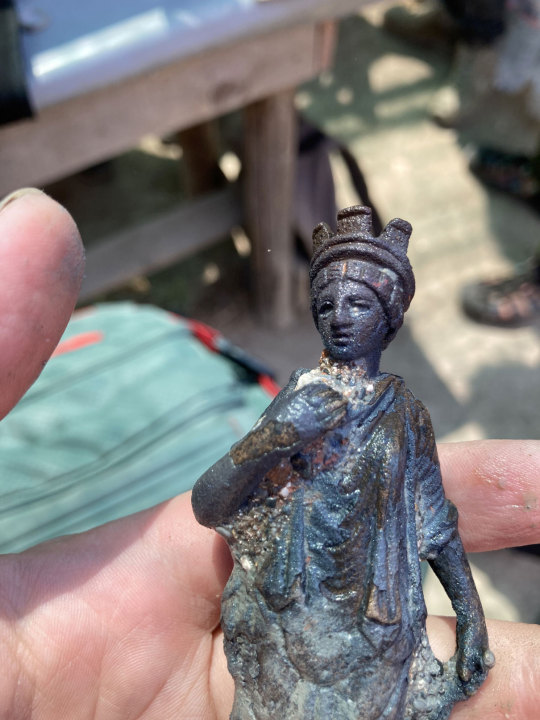


Decorative elements such as pinecones, branches, and bronze serpents—one nearly a meter long and thought to represent the Agathodaimon, a protective spirit—emphasize the connection between the rejuvenating waters and nature’s generative power.
Efforts are underway to preserve these extraordinary finds. The National Archaeological Museum of San Casciano dei Bagni is being established in the Archpriest’s Palace to house the artifacts, while a thermal archaeological park is planned around Bagno Grande to promote cultural tourism.
By Dario Radley.

#Bronze Statues and Coins Found at Ancient Sacred Bath in Tuscany#Bagno Grande sanctuary in San Casciano dei Bagni#Balnea Clusinae#roman coins#ancient coins#bronze#bronze statues#bronze sculpture#ancient artifacts#archeology#archeolgst#history#history news#ancient history#ancient culture#ancient civilizations#roman history#roman empire#roman era
567 notes
·
View notes
Text
This is so cool and interesting
In what they called an “archaeological Hanukkah miracle,” a University of Haifa team discovered on Friday a rare hoard of some 160 coins, dating from the Hasmonean period, during a dig in the Jordan Valley, the university said Sunday.
The coins were discovered in what is thought to have been a roadside station, on what was then a main road along Nahal Tirzah that ascended to the Alexandrion Fortress, also known as Sarbata, north of Jericho in what is now the West Bank.
The coins were dated by experts to the reign of “King Alexander Jannaeus, whose Hebrew name was Jonathan… He reigned from 104–76 BCE. He was the son of Johanan Hyrcanus, [and] the grandson of Simon the Hasmonean (brother of Judah Maccabee),” the statement said, noting that the Alexandrion Fortress, near where the coins were discovered, was built by Jannaeus. ...The students and volunteer excavators were very excited to find such a Hasmonean hoard, especially during the Hanukkah holiday,” the researchers said. Dr. Yoav Farhi, part of the research team and an expert on ancient coins, had arrived on Friday at the dig site with a pack of “Hannukah Gelt,” the chocolate coins covered in gold foil that are a ubiquitous feature of the holiday, explained Dr. Shay Bar of the University of Haifa’s Zinman Institute of Archaeology.
Farhi passed them out to the staff and said, “This is so that we will find some coins today, and four or five hours later, the coins were found,” Bar said on Sunday, speaking to The Times of Israel....
This style of coin dates from 80/79 BCE and is extremely rare, the researchers said, who added that the cache is also one of the largest collections of ancient coins ever discovered in the Holy Land. According to Bar, in addition to the collection of 160 coins, other Hasmonean period coins were also discovered during the excavation, bringing the total number of coins found at the site to over 200.
...The site includes a mikvah (ritual bath), a cistern for storing water, and other buildings. It’s likely that the room where the coins were discovered was used as a kitchen or for food preparation, Bar said. “We discovered a Hasmonean site, on the ascent to Sarbata… It’s very Jewish. It’s important because this site was active for a limited period. The moment we have these coins, dating to the time of Alexander Jannaeus, with all the other finds there… it gives us a very exact time capsule, which doesn’t always happen in archaeology,” Bar said.
#Jewish history#jumblr#coin collecting#one of many Jewish revolts against colonialism#the entire point of which was to avoid assimilating into the invader's culture and disappearing as a people#it's the core of what it means to be an indigenous group#happy Hanukkah#chag chanukah sameach#wall of words
374 notes
·
View notes
Text

A lion attacks a stag. Reverse of a silver didrachm issued by the polis of Elea in southern Italy between 420 and 380 BCE. The obverse, not shown, bears the head of Athena. Now in the Staatliche Münzsammlung, Munich, Germany. Photo credit: ArchaiOptix/Wikimedia Commons.
#classics#tagamemnon#Ancient Greece#Magna Graecia#Classical Greece#art#art history#ancient art#Greek art#Ancient Greek art#Classical Greek art#coins#ancient coins#Greek coins#Ancient Greek coins#didrachm#numismatics#ancient numismatics#Staatliche Münzsammlung#animal violence tw
765 notes
·
View notes
Text

Golden aureus of Marcus Aurelius, Rome, c. 171-172 CE. British Museum (ID: R.12617)
#ancient history#archaeology#art history#roman empire#hellenism#roman art#ancient rome#numismatics#ancient art#roman coin#marcus aurelius
291 notes
·
View notes
Text
Yo

#trans pride#trans#trans beauty#trans books#trans community#trans happiness#trans hc#trans healthcare#trans history#trans hook#trans hot#trans man#trans oc#transparent#transx please interact#trans unity#trnsmt#trans youth#trans usa#trans uk#trans bimbo#transx safe#trans positivity#transid safe#transportation#trans vampire#transx coining#trans puppy#trans is sexy#trans body positivity
243 notes
·
View notes
Text


Nicely preserved Roman coin featuring a portrait of Agrippina the Elder, the mother of Emperor Caligula. Agrippina died in exile during the reign of Tiberius. Her son retrieved her remains and had her reinterred in the Mausoleum of Augustus in a show of familial piety. The coin was minted during his reign.
#ancient rome#roman empire#ancient history#ancient culture#julio claudian dynasty#agrippina the elder#agrippina maior#coin#roman coin#roman coinage#reign of caligula#coinage#its probably just accidental scratch but she looks as if she's crying
213 notes
·
View notes
Text
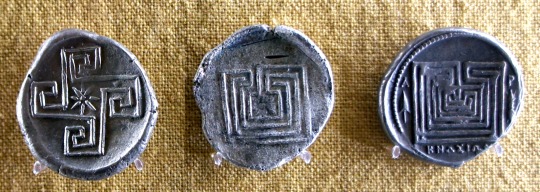
Ancient coins depicting the labyrinth from Knossos, Crete. Greek myths said that the rulers of Knossos built a labyrinth, at the center of which was a formidable minotaur. The stories tell of an Athenian hero, Theseus, who braved the maze and took on the monster.
{WHF} {Ko-Fi} {Medium}
3K notes
·
View notes
Text
Anyone who claims that the secret ending in Veilguard is disrespectful or nullifies agency in the previous three games is either unable to traverse layered storytelling or is being ignorant on purpose.
I am not sure how someone assumes that it was about mind control or magic when games upon games the fantasy setting in Dragon Age has been a medium for telling stories about the nature of people, about different perspectives, about the dangers of applying singular ideals to a complex existence, about how people and the ways in which they interact shape destinies.
How can you not be excited to learn that there’s a world outside Thedas, that the web is more complicated and that when one wrestles to break the threads it vibrates all the way to the spider letting it know it’s dinner time?
#dragon age#veilguard spoilers#dragon age the veilguard#veilguard#the executors#datv#loghain mac tir#solas#ghilan'nain#elgar'nan#dragon age lore#your own character is literally changing kingdoms or history just by nudging companions a certain way#alistair theirin#as king#briala#and the future of elves in orlais#anders#also a good example imo on the other side of the coin#the lack of people perceiving him and his condition#your talks to Solas matter so much both as rook and as the inquisitor#did you mind control any of them?#get off my lawn#post gor away from me#sorry#but yeah
161 notes
·
View notes
Text
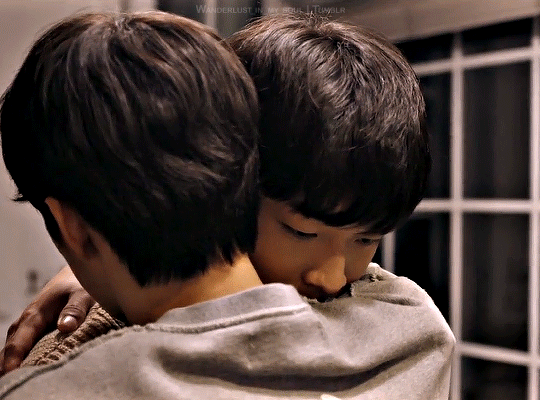

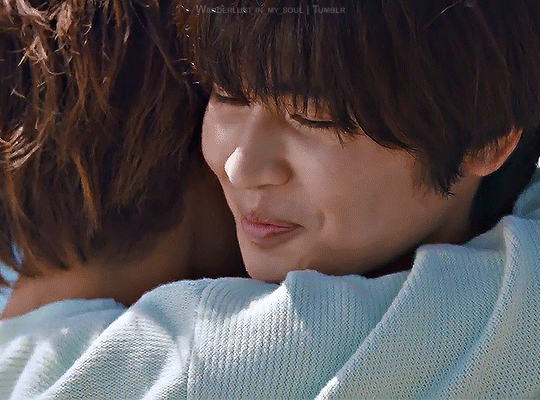



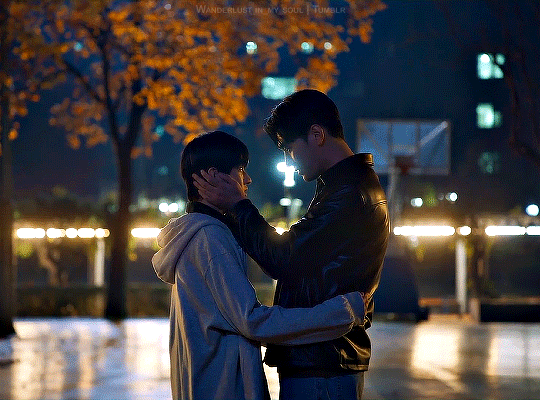


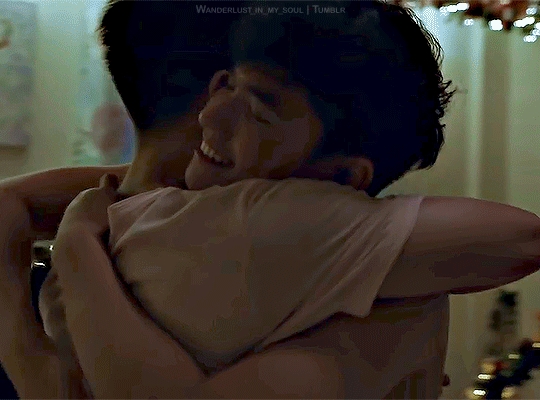
“It was an intense embrace, no awkwardness, no holding back, the kind of hug two people can only achieve after long intimacy, but anyone can give in an instant to a stuffed bear.” ― Ada Palmer, Seven Surrenders
To My Star 2
A Boss And A Babe
Minato Shouji Coin Laundry
You're My Sky
My School President
Don't Say No
Semantic Error
The New Employee
History 2: Crossing The Line
Gaya Sa Pelikula / Like In The Movies
Favorite hugs (Part 3/?) as part of my favorite bl-tropes collection, as always in no particular order.
#multi bl#multibl.edit#hugsthatIlove#bl tropes#bl series#bl drama#to my star 2#a boss and a babe#minato shouji coin laundry#you're my sky#my school president#don't say no#semantic error#the new employee#history 2: crossing the line#gaya sa pelikula#like in the movies#myedit#hug#because I need a hug today
422 notes
·
View notes
Text


Gold octadrachm of Ptolemy IV, Ptolemaic Egypt, 221-204 BC
from The Metropolitan Museum of Art
504 notes
·
View notes